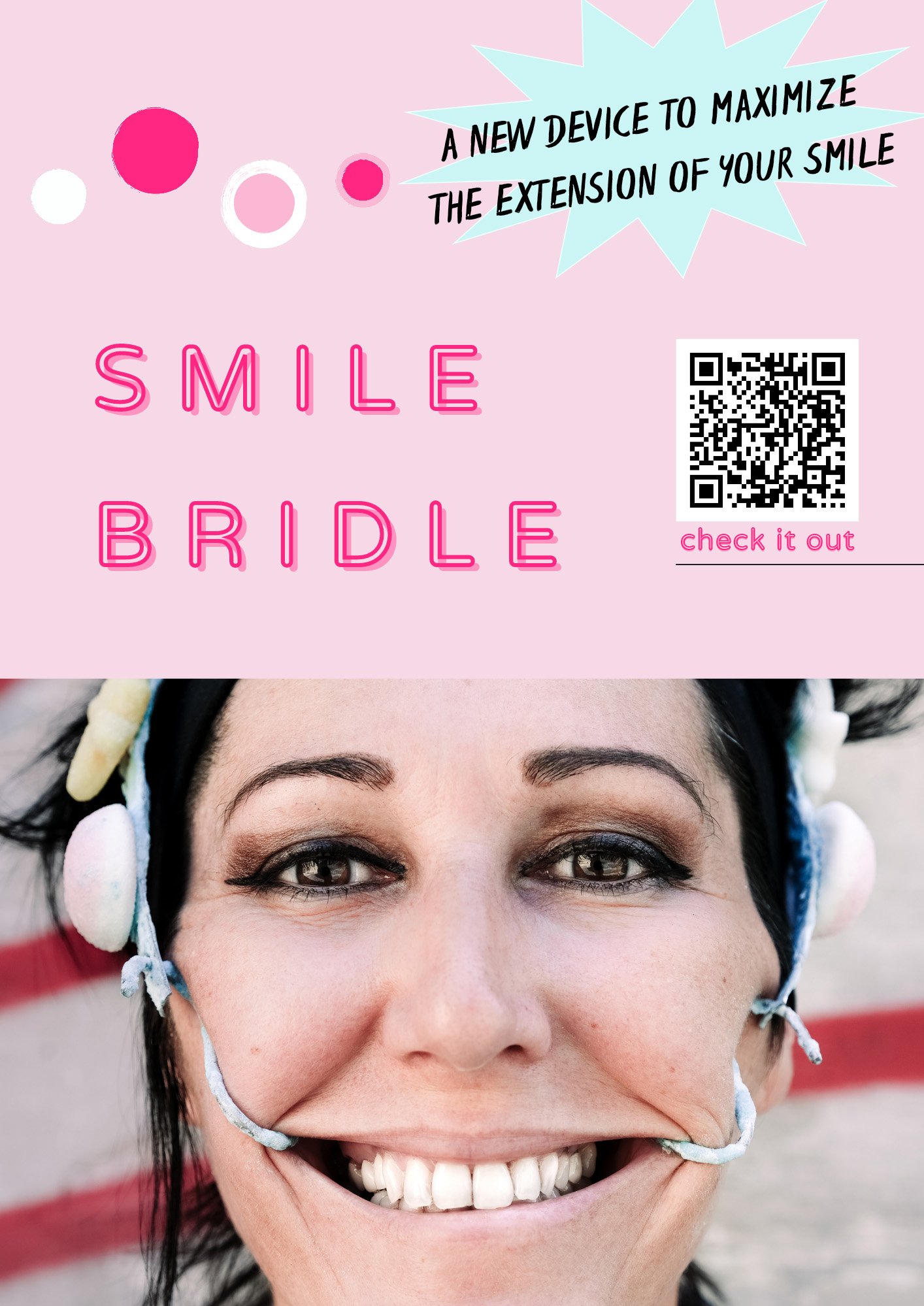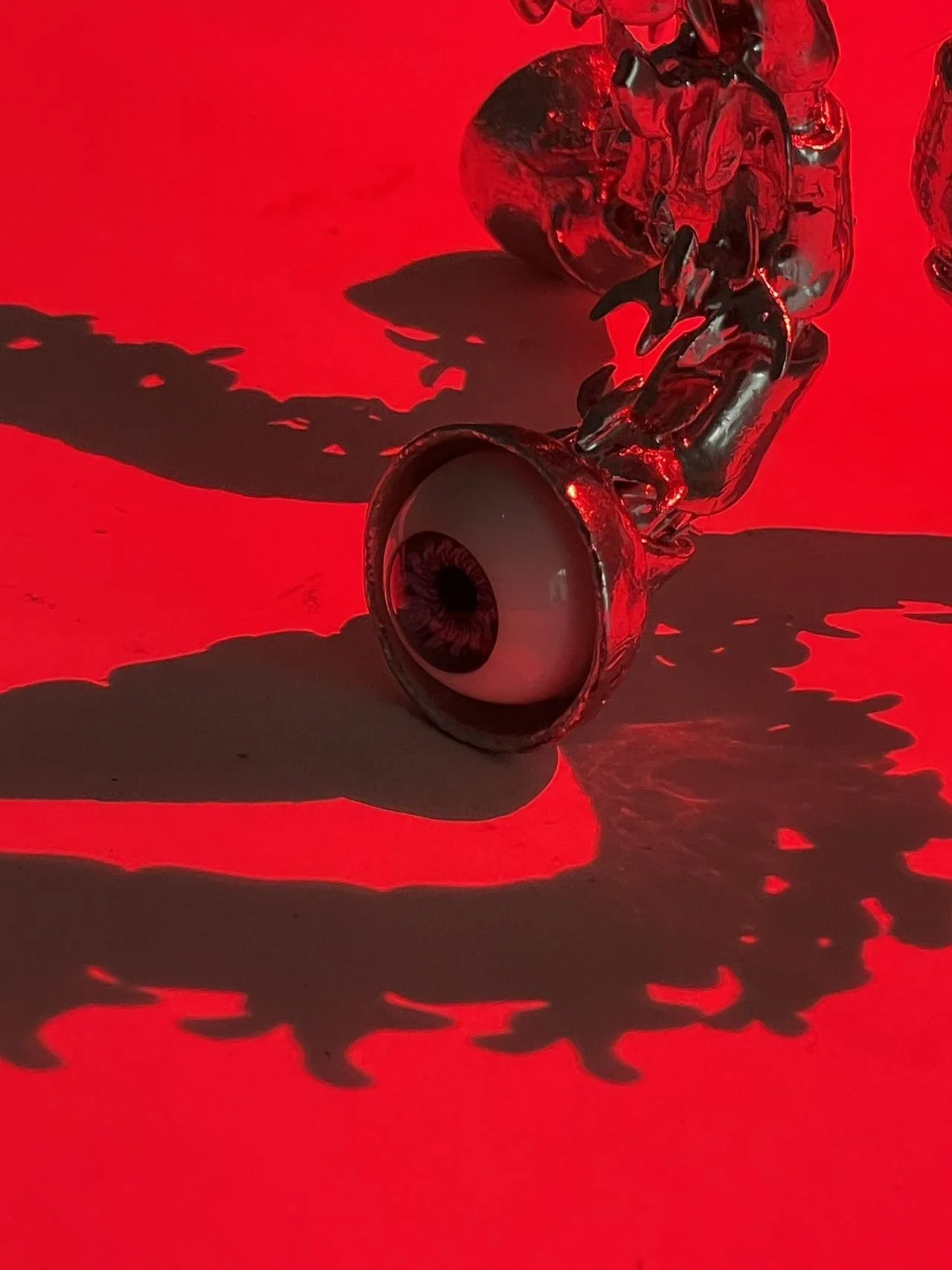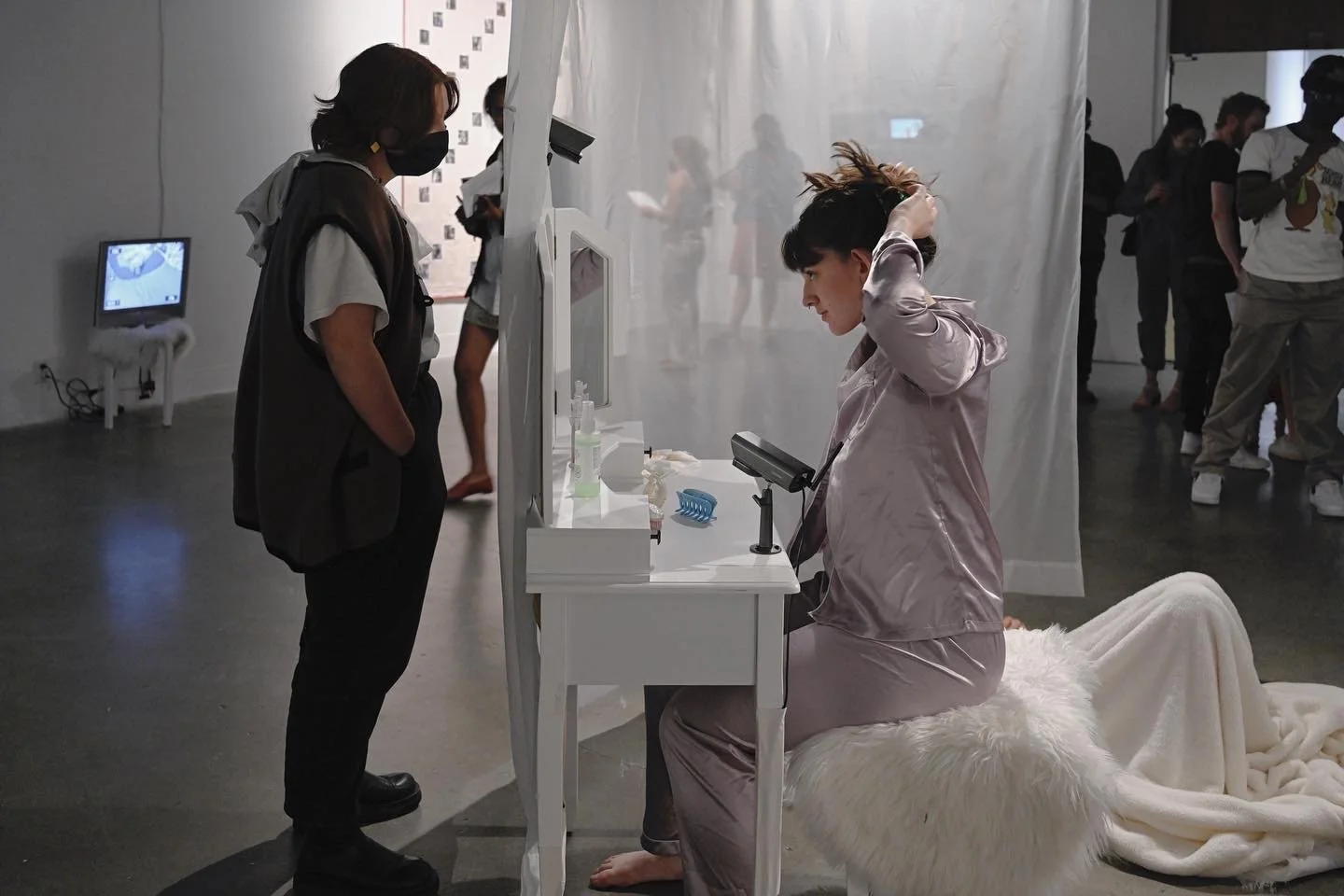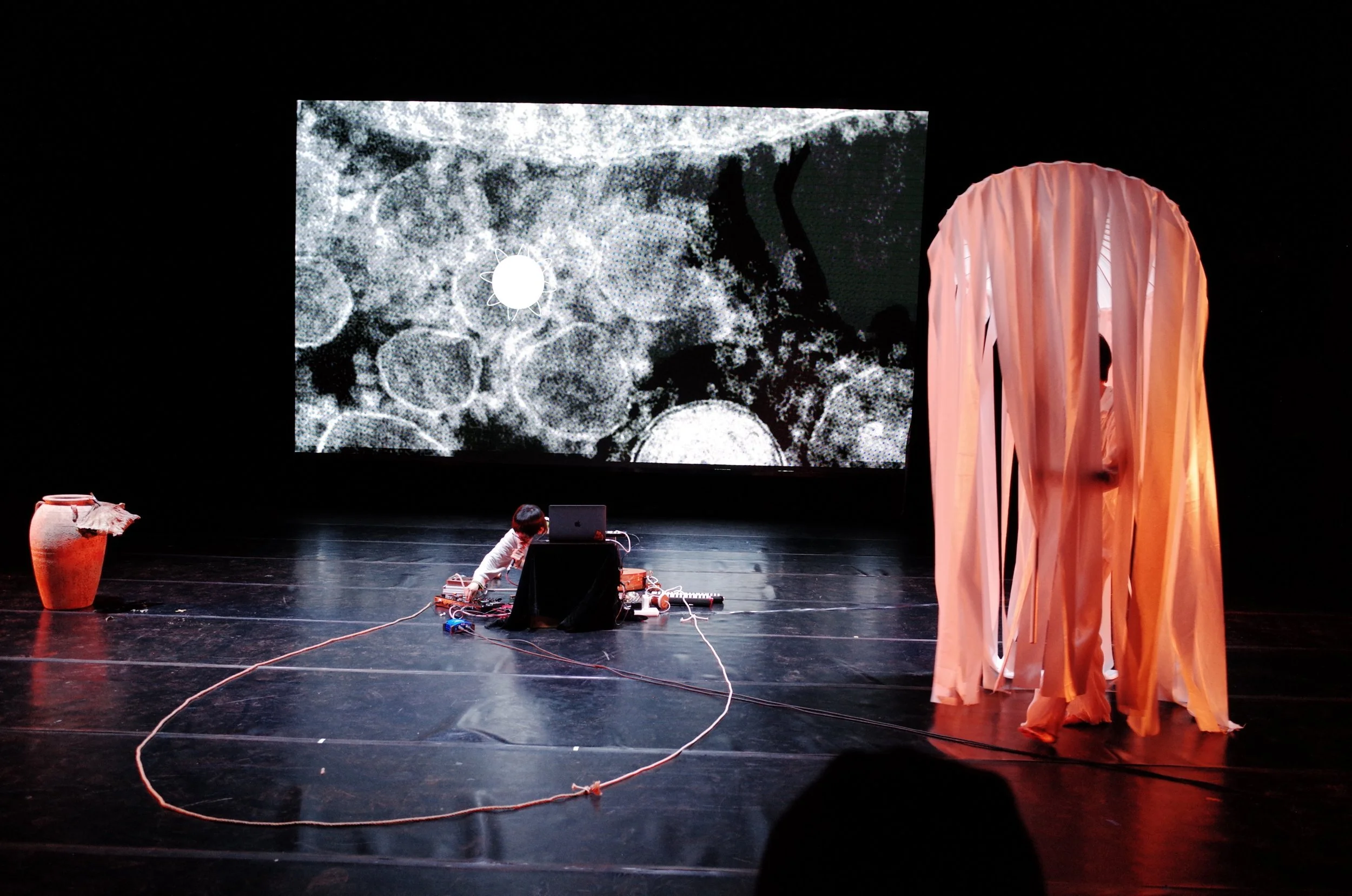10 Questions with Niko Pazzaglia
Niko Pazzaglia is a London-based researcher, educator, and artist working with photography, performance art, and site-specific installations. She holds a Ph.D. in Italian Studies from the University of Oregon and an MA in Contemporary Photography from the Central Saint Martins, University of the Arts London. Niko has participated in several group exhibitions at the Saatchi Gallery, Tate Exchange, and Unit 1 Gallery. Among her publications figures the co-edited book Photography as Power: Dominance and Resistance through the Italian Lens.
Niko Pazzaglia - Portrait
ARTIST STATEMENT
Niko's art practice draws on fashion, pop culture, literature, philosophy, and contemporary art to investigate issues that range from media representation, consumerism, and the beauty system to practices of subjectification and exploitation of bodies, especially in the context of gender. With the site-specific work "Beauty_Beauty_Matters" installed on Depop and part of the self-lead residency 'Make Depop a Residency,' Niko has been interested in performative practices of dissemination of the work of art, for instance, through social media, commercial flyers, and the marketplace as well as in the ways an artwork, because of its relationship with the user/consumer changes over time. Using a playful tone while selling items on platforms not originally designed for the arts, her work approaches the everyday consumer, raising questions about gender stereotypes, the happiness imperative, and, most importantly, the status of art in contemporary society.
Niko's work also explores the performativity of materials as well as the relationship between body and matter, focusing on the body as the site of power and resistance. Through the creation of wearable sculptures, her work aims to question the body's physical boundaries and social constraints while at the same time addressing its infinite possibilities for extension, mutation, and interrelations. Throughout both practices of enlargement and reduction, the wearable sculptures included in the Depop collection exist both within and beyond the normativity of bodies, opening a space for resistance, a space for the emergence of "the body without organs" – to borrow Deleuze's and Guattari's expression. With her latest work, "I Sound. Therefore I Am," Niko pushes the investigation between bodies further, rethinking the materiality of bodies beyond representationalism. With this piece, she deconstructs the cartesian Cogito Ergo Sum, claiming the body's existence through the act of sounding.
Doubt, Digital photography, 20 x 20 cm © Niko Pazzaglia
INTERVIEW
First of all, introduce yourself to our readers. Who are you, and how did you start experimenting with images?
My name is Niko, and I am a multidisciplinary artist whose creative practice is influenced by a diverse range of cultural elements, including fashion, pop culture, literature, philosophy, and contemporary art. My intrigue with images and their effect on our perception of reality has led me to explore various mediums and techniques to produce thought-provoking artworks.
During my graduate studies in Italian and French literature in the US, I began experimenting with self-portrait photography. Capturing images of myself served as a means of introspection as I delved into the complex relationships between the body and the external world, examining both its vulnerability and normativity.
My artistic repertoire extends beyond self-portrait photography to encompass wearable sculptures and performance art. Central to my work is the human body, with a particular emphasis on the female form as a symbol of power and resistance.
You have studied and exhibited internationally but always kept a strong bond with Italy. How does Italian culture influence your work?
My deep connection with Italy has significantly influenced my work and granted me a distinct viewpoint on the world. Raised in a small provincial town steeped in Catholicism and social conventions, I developed a keen interest in heteronormativity, societal norms, and the beauty system, which undoubtedly stemmed from my upbringing.
What truly distinguishes my work, however, is the diverse array of influences it encompasses. I draw inspiration from an array of renowned international artists such as Pablo Picasso, Francis Bacon, Rebecca Horn, Cindy Sherman, Sarah Lucas, and Iris van Herpen, to name just a few. This rich and varied amalgam of inspirations enables me to approach my work with a fresh perspective and create art that surpasses boundaries.
The Monster (Still from Video Performance) © Niko Pazzaglia
How would you define yourself as an artist today?
As an artist today, I see myself as an active participant in the ongoing conversation about the role of art in contemporary society, constantly pushing boundaries and redefining the way we perceive and engage with the world around us. My artistic practice is characterized by an experimental approach, often incorporating various mediums and techniques such as fashion, photography, performance art, sculpture, and site-specific installations. By engaging with diverse materials and platforms, I strive to create dynamic and thought-provoking work that resonates with a wide audience. I firmly believe that the purpose of art should be to raise awareness and transform reality. Art should be accessible to the general public and seek innovative ways to exist beyond traditional gallery spaces by embracing the streets, digital realms, and marketplaces.
Can you tell us about the process of creating your work? What is your artistic routine when working?
In my creative process, I typically begin with research and exploration of the themes and issues I aim to address. Subsequently, I experiment with various materials, techniques, and mediums to determine the most suitable means of expressing my ideas. This process may involve working with recycled materials or engaging in performance art. My artistic approach is characterized by continuous exploration and boundary-pushing.
For example, the Depop collection was conceived during the pandemic while I was a second-year MA student studying remotely. This digital installation not only allowed me to present my work live to my peers in London but also became a conceptually integral part of the project, as it focused on fashion items.
Untitled, digital photography on canvas © Niko Pazzaglia (collaboration with Farrah Li)
In your statement, you say you "investigate issues that range from media representation, consumerism, and the beauty system to practices of subjectification and exploitation of bodies, especially in the context of gender." How do you incorporate such themes into your work?
I often use appropriation art, which involves borrowing or repurposing images, texts, or objects from popular culture and recontextualizing them in my work. By placing these elements in new contexts, I question the authenticity and authority of media messages and encourage viewers to critically engage with the images they consume daily.
The wearable sculptures I created for both the Depop collection and for my last series, "What Can a Dress Do," push the boundaries of physical and social constraints while highlighting the potential for resistance and transformation. By using materials that evoke both vulnerability and strength, I create a dialogue around the societal pressures related to beauty standards and bodily norms. Through this work, I aim to encourage viewers to question and reconsider the constructs that define and confine human bodies and identities, emphasizing the potential for boundless exploration, subversion of societal norms, and resistance to representationalism and binaries. In these performances, the body becomes part of the rhizomatic structure, highlighting the regenerative power of rhizomes and the human spirit.
"I Sound Therefore I Am" deconstructs Descartes' Cogito Ergo Sum through the act of sounding, asserting one's body's existence beyond representationalism. "The Monster" specifically addresses the theme of exclusion and rejection. As the body moves in and out of frames, it discovers new forms and movements, resulting in a large, irregular, and unconventional shape. Both pieces explore the notion of a body possessing limitless possibilities, echoing Deleuze and Guattari's concept of the "body without organs" as a state of pure potentiality, free from the limitations of existing structures and functions.
Additionally, with my Depop collection, I also address these themes through the use of unconventional platforms and performative practices. By presenting my art on commercial flyers or online marketplaces such as Depop, I engage with the everyday consumer and challenge conventional art dissemination methods. This approach allows me to reach a wider audience and provoke discussions about gender stereotypes, the happiness imperative, and the role of art in contemporary society.
Smile Bridle Flyer © Niko Pazzaglia (photo and grafic credit Camilla Buzzai)
You also work with different mediums and techniques, ranging from photography to performance, sculpture, and site-specific installations. How do you choose which medium to use for a specific project?
I choose the medium for a specific project based on the concept and the most effective way to communicate my ideas. Whether it's photography, performance, sculpture, or site-specific installations, my choice of medium is driven by the need to create a compelling and engaging experience for the viewer.
How do you differentiate your work from the rest? In other words, what do you feel makes it unique and truly your own?
What differentiates my work from the rest and makes it unique is the way I seamlessly merge diverse influences and mediums while maintaining a consistent thematic focus on social issues and the relationship between body and power. Another aspect that sets my work apart is the incorporation of performative elements and unconventional platforms, such as social media and online marketplaces, to disseminate my art. By challenging the traditional modes of art presentation and engaging with everyday consumers, I aim to spark conversations about gender stereotypes, societal norms, and the status of art in contemporary society.
My work is also characterized by a strong philosophical foundation, drawing from new materialism and critiques of representationalism and binary knowledge systems. This intellectual underpinning informs my artistic choices and adds depth to the visual and conceptual aspects of my practice. In summary, the combination of interdisciplinary exploration, performative strategies, philosophical grounding, and sustainability-focused approach makes my work unique and truly my own.
Butt Boostle, metal, coconut, fabric wearable sculpture, digital photography © Niko Pazzaglia
Do you find that the shift to digital exhibitions and art fairs has helped you promote your work?
The shift to digital exhibitions and art fairs has certainly provided new opportunities to promote my work, allowing me to reach a wider audience and engage with people from different backgrounds and geographical locations.
What do you think about the art community and market?
The art community and market are ever-evolving, with constant opportunities for growth and collaboration. While the market can be challenging at times, I believe it is essential to stay true to one's artistic vision and continue pushing boundaries to find success and meaning in the art world.
Finally, any projects you are looking forward to for this year?
I am looking forward to several exciting projects this year, including the development of new wearable sculptures and video performances. I am also keen to find new collaborations with artists and fashion designers and to work increasingly in community engagement projects, for instance, in support of mental health and wellbeing.





















